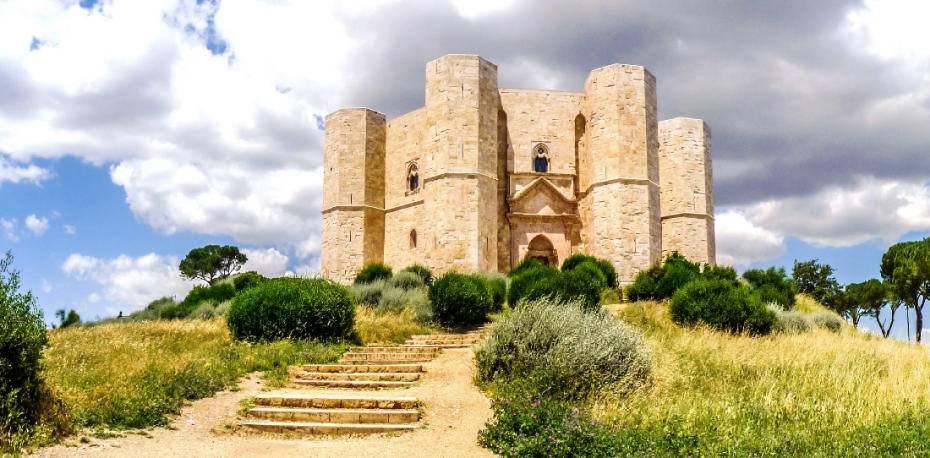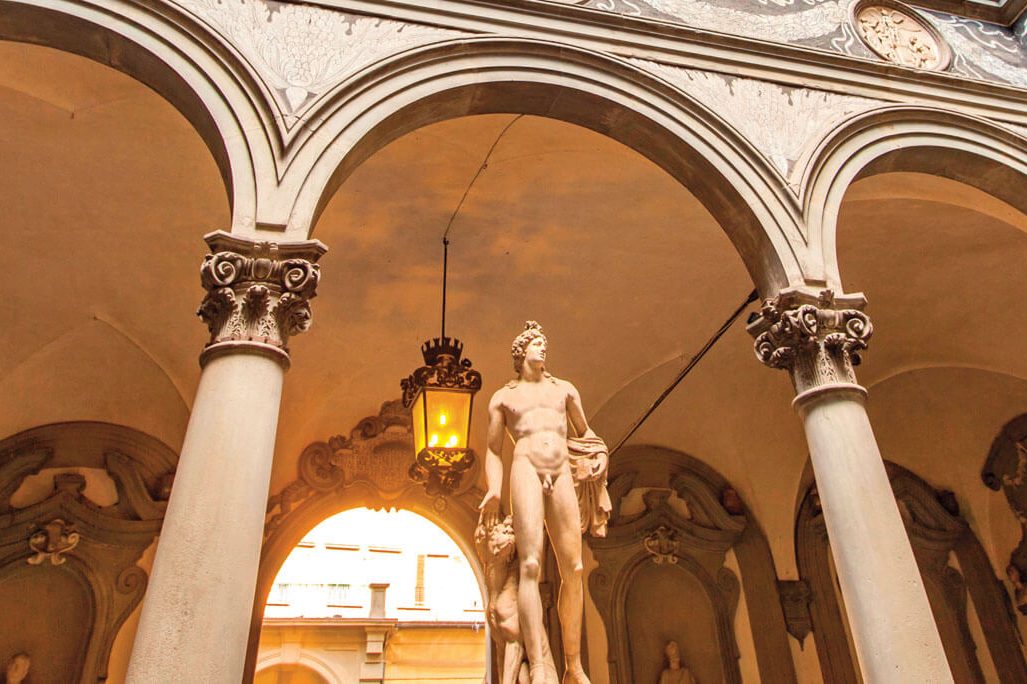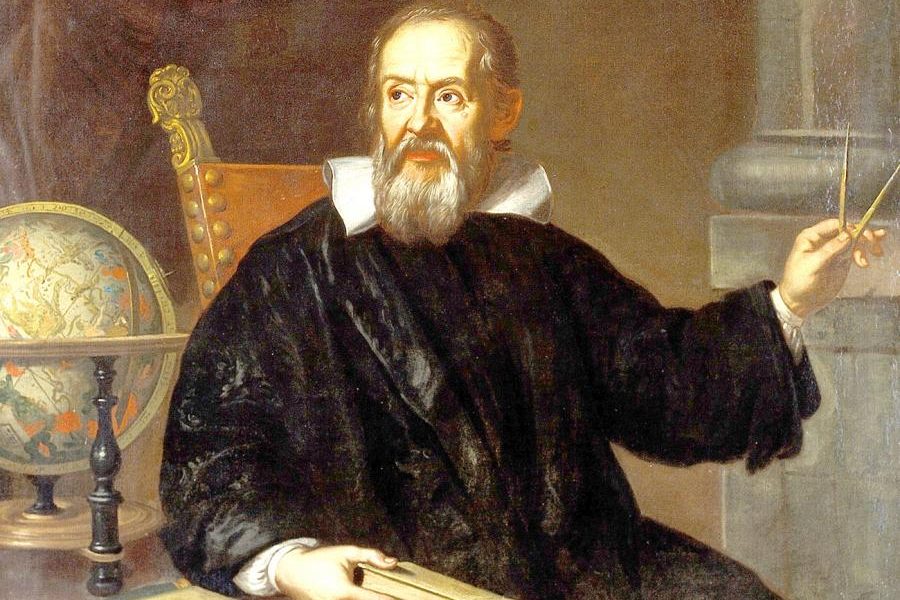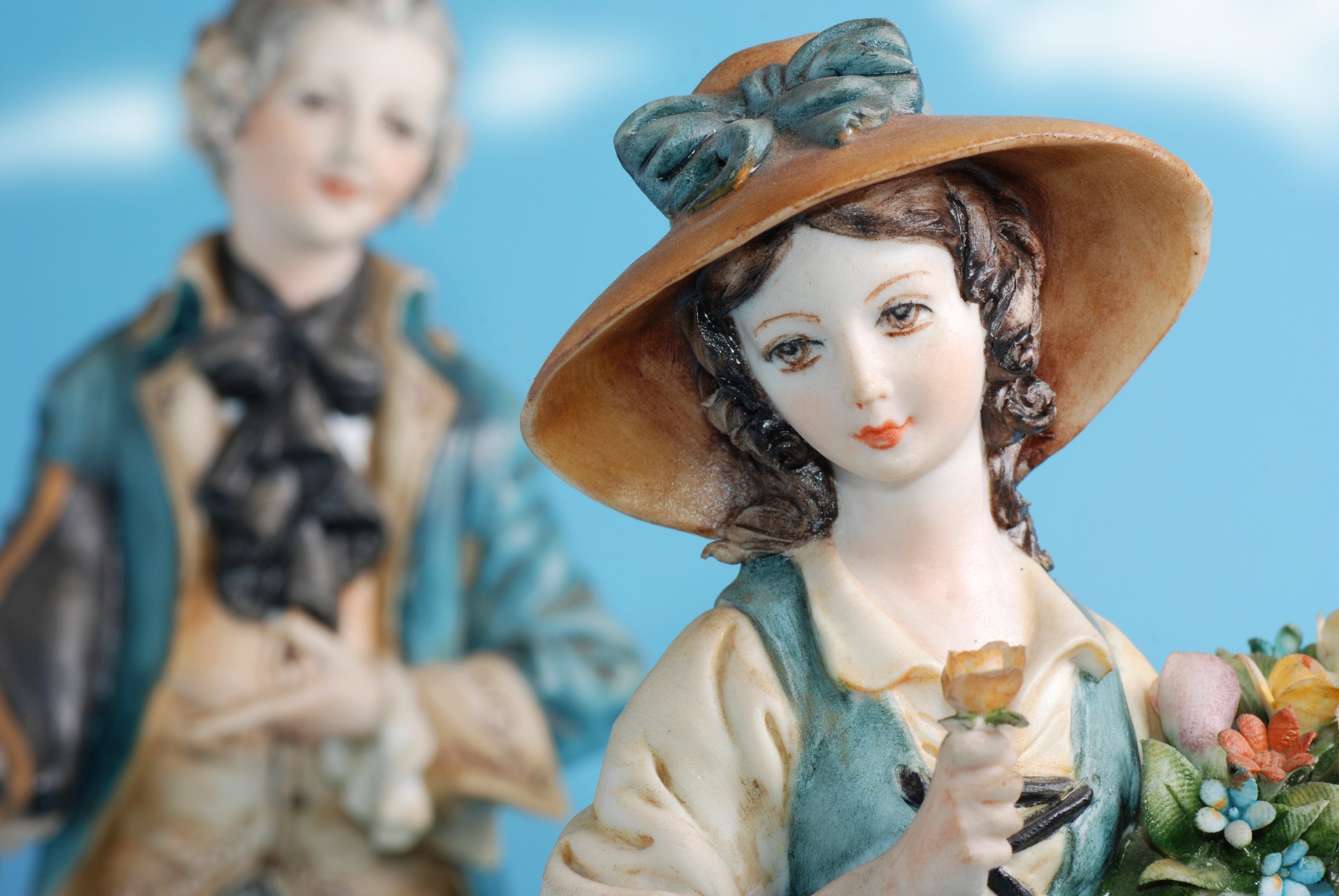Built around 1240 by the Holy Roman Emperor Frederick II and located on a plateau near the Apulian city of Andria, Castel del Monte is one of the most famous medieval castles in Italy. But despite having been erected almost 800 years ago, the mysteriousness of the place continues to haunt visitors and researchers who still don’t know what to make of it: in fact, nobody is even sure about the exact purpose of this building in the first place. Let’s try to unveil some of Castel del Monte’s strangest enigmas together.
The castle appears to have been constructed on the remains of an earlier Norman fortress and probably it was not even complete by the time of Frederick’s death in 1250. All in all, it is characterized by a peculiar octagonal shape whose angles constitute eight towers, being themselves just as many octagons. Three of them include internal spiral staircases leading to the floor above, where one may find interconnected rooms that appear to be identical to each other. In a sense, the very structure and arrangement of this building hide something mysterious.
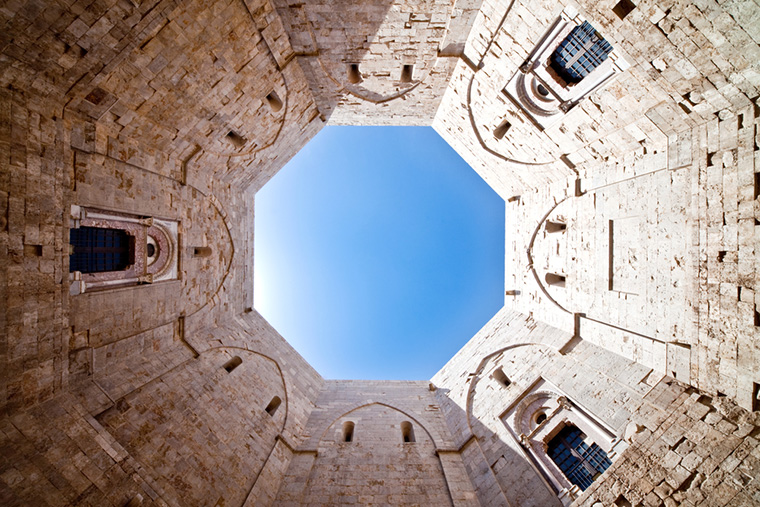
This is the feeling that one gets already as he/she climbs the way uphill to Castel del Monte. But then, as you finally enter the only gate by way of either of the two monumental staircases on the outside, the view of the inner courtyard presents you with an even greater enigma: you find yourself in a dead end, and the only way out is to look at the octagon-shaped glimpse of blue sky above. The effect is breath-taking, awe-inspiring. It is by such geometric perfection that you can understand how the UNESCO resolved to include the castle in its list of World Heritage Sites, while the Italian people decided to let it appear on their one-cent euro coins.
If Castel del Monte is now unanimously considered a masterpiece of medieval architecture, it is because of its unique intermingling of North European, Arabic, and classical motifs. At the same time, this is the final product of its founder’s visionariness, tolerance and patronage of the arts: Emperor Frederick called upon the best scientists and artists of his generation to realize this castle. According to one of the many stories about Castel del Monte, the whole building is even reported to be in itself the ultimate assertion of imperial power, as testified by its shape resembling that of a crown.
The fact remains that – even though it continues to be referred to as a “castle” – it is not quite sure whether Castel del Monte ever served this function. In ancient times, it was called a castrum, that is a military fortification with defensive purposes. But as somebody pointed out: where are the drawbridge, the moat, and the arrow-slits? Most experts reply that the building might have been just a “hunting lodge”, as suggested by a low relief depicting a hunt scene. But it seems unlikely that such building would lack – for example – a stable, and that it so much differs from other similar lodges.
Another legitimate question that everyone should ask him or herself is: was Castel del Monte ever used as a dwelling? While there are restrooms and fireplaces on each floor, nowhere inside the castle are to be found the necessary kitchens and bedrooms. And yet the remaining sculptures and adornments testify of a certain luxury and style in the former decoration of the interiors. In the end, if anyone ever lived in Castel del Monte, it was probably for a short time, maybe just to use it as a spectacular location in the series of high-ranking weddings that took place here. Or again – as a recent theory suggests – the building was a sort of “wellness centre” inspired by the Islamic hammam that the Emperor got to know during the Sixth Crusade. But it is hard to lean one way or another, because every theory still has its pros and cons: the only certainty is that – when the Kingdom of Italy bought it in the 1870s – the site was in deep disrepair, having been used over the centuries as a refuge for noble families escaping the plague, as a shelter for shepherds and bandits, and most of all as a prison.
By personally visiting the castle, you would realize that such a weird and unparalleled construction is hard to define with words alone. And what is more, you would have the occasion to take notice of all the geometrical, arithmetical and astronomical symbolism that permeates the solid walls of Castel del Monte. Some people suggested that the place might well be a temple: thus would be explained the site’s sacred-like location (a 500-meter-high hill on which the sun shines all day) and the position of its main gate (facing East), but also its octagonal shape (symbol of the union between Heaven and Earth) and the recurring number eight (symbol of the Infinite). Some others in turn have gone as far as to claim that Castel del Monte might be somehow related to the mystery of mysteries, the Holy Grail. But as it happens to every story ever spun about this place, the truth is that the enigma continues to be unsolved.
